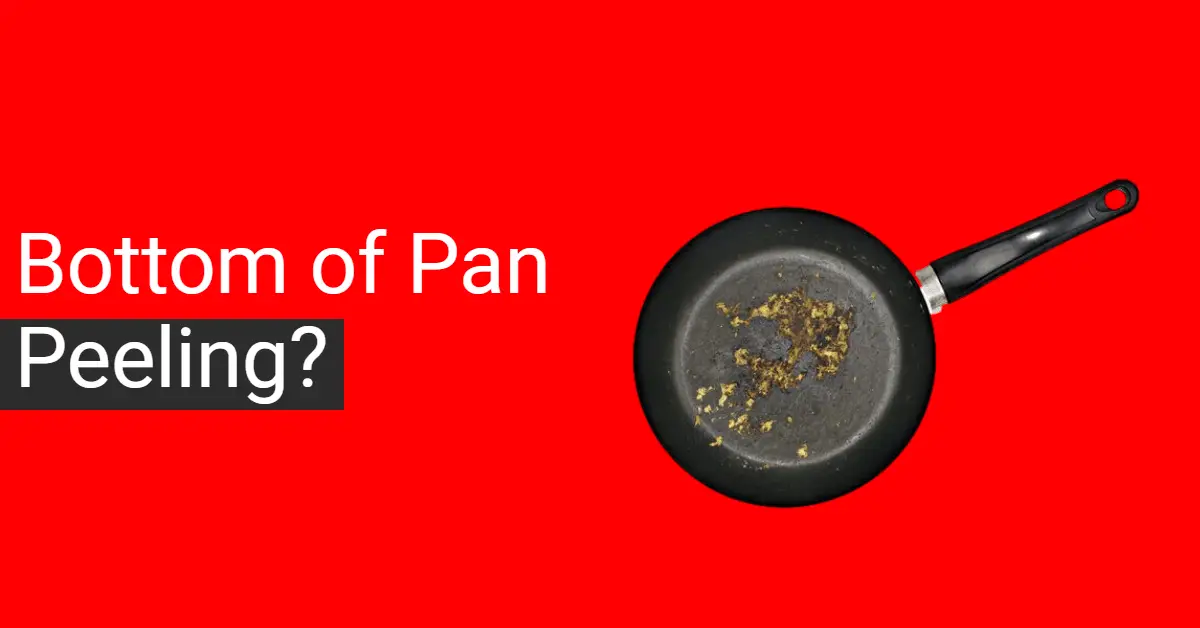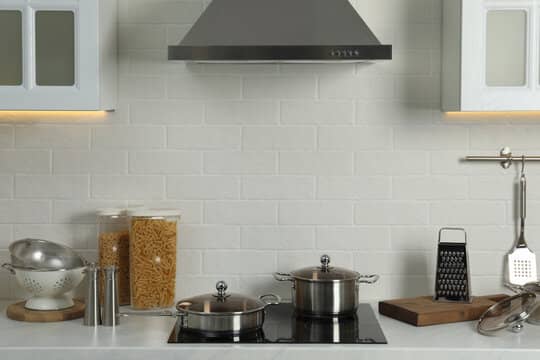Bottom of Pan Peeling (Causes, Solutions & Safety Concerns)
My Non-Stick Pan Has Started Peeling. Is It Still Safe to Use?
While cleaning the burnt pan and removing the stains, some of the coats of the nonstick pan start removing with scratches. This begins the peeling of coating from the nonstick pan, which grows with time and ends with the scrapping of the pan.
The Author
In the modern era, non-stick cookware is common in every kitchen, which has a lot of good things in it as it does not take a lot of oil to make a fry or cook a semi-gravy curry in non-stick cookware.
Non-stick pans are also used for almost the same purpose, but it is mostly used for non-deep fries and to sort cooked food when served.
Nonstick pans are also used for cooking a chapati or roti without oil in some cases, making a fluffy chapati without being burnt.
But while cooking food, sometimes the surface of the pan gets burnt, and because of repeated burning, the pan’s coating starts peeling, and the pan must be scrapped.

Why Non-stick pans peel off
All everyday use utensils tend to damage with time.
There is no specific expiry date for non-stick pans. They tend to get deteriorated with the number of users.
Mainly the use depends on the duration of cooking and the heat provided for cooking.

Although the amount of moisture in the food, amount of oil used, burning point of the oil, and spices used in the food also play a key role in getting the food burnt and making the pan surface scorched.
When food gets burnt, some spices and foods are stuck to the pan, which needs to be rubbed with a hard scrubber to remove the burnt foods from the pan’s surface.
While cleaning the burnt pan and removing the stains, some of the coats of the nonstick pan start removing with scratches.
This begins the peeling of coating from the nonstick pan, which grows with time and ends with the scrapping of the pan.
Is it safe to use after peeling off
The safety of cooking in a peeled-off pan depends on its coating type. There are several types of coatings used in nonstick pans.
Some commonly used coatings are PTFE, ceramic coating, superhydrophobic coating, non-stick silicone coating, enameled cast iron coating, etc.

Coating to be used varies with the cost of cookware and things to be cooked in it.
Among all the types of coating, the market-leading utensils companies make their cookware using Polytetrafluoroethylene (PTFE).
It is one of the cheapest and the best coatings available on market.
The Teflon in PTFE does not degrade until 500ﹾC, but beyond this specified temperature PTFE starts releasing fluorocarbons and other toxic fumes.
These toxic fumes can cause diseases like bronchitis, asthma, etc., and fluorocarbons are considered carcinogenic.
There are risks of the pancreatic gland and liver gland tumor that may develop because of Teflon.
Immune system and reproductive problems may also occur. Even in birds, ulcers are developed because of those fumes.
So we may consider not using after peeling off but all these are valid only if the temperature is higher than 500 ﹾC.
Can we control peeling and minimize risk
The peeling of the nonstick pan can be easily controlled with some preventive measures.
The first thing that needs to be considered is the cooking time and heat of cooking so that burns can be avoided.

Secondly, start taking some preventive measures when mild scratches are developed.
Some nonstick pan repairing sprays can be used in a dry pan that will improve its non-stickiness even after mild scratches are developed.
Boiling a mixture of baking soda, vinegar, and water in a nonstick pan for 10 mins repairs a scratched pan to some extent.
Sprinkle some salt into a warm pan and holding for 10 mins can also give some relief.
All these techniques can minimize peeling and increase the life of the pan to some extent.
There are other things also to be considered while cooking in a nonstick pan.
Pre-heating an empty pan for a long time before putting anything on it may cause the pan to reach a very high temperature in a very short time.
Some foods require heating for a longer time and cooking at high temperatures, avoid cooking such foods in non-stick pans.
Using stainless steel spoons while cooking in a nonstick pan causes the coating to deteriorate, because you may tend to drag the spoon over a pan to remove any stuck food, which removes coating along with the food.
Do not use any hard scrubber, steel wools, etc for cleaning nonstick utensils because it removes coatings from the pan along with stuck foods.
Keep proper ventilation in the kitchen, using chimneys is highly recommended when using nonstick pans. That will provide relief from toxic gases.
Cleaning a burnt pan
The main problem of coating getting deteriorated for a pan starts while cleaning a burnt pan.
Because one or the other way, pans tend to burn and get the surface scorched. So, to get rid of this use a non-stick spray before cooking.

Even still if it gets burnt, don’t clean it directly because that will consume time and it has a high probability of removing the coating.
So keep the pan soaked in a dishwasher mixed water.
Final Thought
Unusually, you are using a non-stick pan for a longer time, but it never gets deteriorated.
Even after taking all the precautionary measures, the coating deteriorates with time, so changing non-stick cookware with time is very important.
Using peeled non-stick cookware has both good and bad effects.
Peeled pan can cause serious health issues but if it is treated from time to time, decreases the severity and risk.
Even after the coating is fully removed the pan can be used for cooking wet foods and at a very low temperature that cooks quickly.
Nowadays recoating facility has also been started but it is limited to only high-end cookware.
But this is not something to Do-it-yourself thing, it must be done by the professionals with coating machines and done in factories.
Although there are a lot of pros and cons of using non-stick cookware, it is always better to avoid non-stick cookware.
Traditional cast iron or brass cookware is always a better option for cooking and does not cause any health issues as well.
